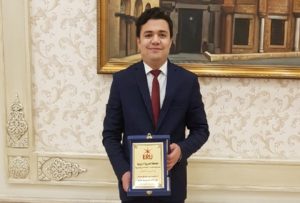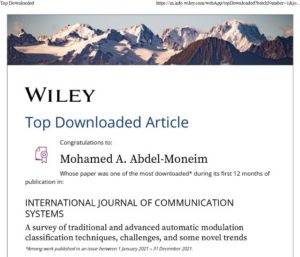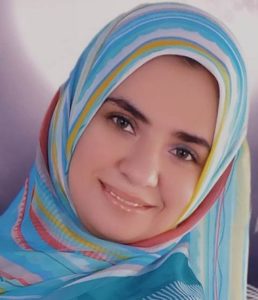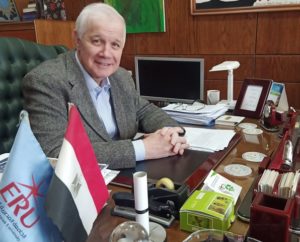A researcher at the Egyptian Russian University invents a method for self-identification of receivers
Dr. Sherif Fakhry Mohamed Abdelnaby, President of the Egyptian Russian University, announced that within the framework of motivating the university administration for researchers to choose distinct research points which comes in line with the university’s research plan, the researcher Mohamed Ahmed Abdul Meniem, Assistant Lecturer at the Department of communications at the Faculty of Engineering, invented a research method for self-identification of receivers, by using image processing techniques and “Artificial Intelligence”. Dr Sherif indicated that this research comes to activate the role of the university as a research institution and a consultant which interacts with the needs of society and the state, with the full support of Dr. Mohamed Kamal El-Sayed Mustafa, Chairman of the University’s Board of Trustees.
Dr. Alaa Al-Batsh, Dean of the Faculty of Engineering at the Egyptian Russian University, asserted that the faculty aims to establish links among academic studies, scientific research and the goals of the sustainable development in the country to make the maximum use of new technology and achieve national goals.
Moreover, Dr. Shaima Mustafa Jaber, Head of the Communications Department at the Faculty of Engineering, noted that wireless communication systems have become one of the most widespread systems in the world as a result of the high increase in data transmission rates through wireless systems. The development in communication systems led to the existence of many challenges and requirements for users, such as an increase in the space used in the space in the wireless communication channel. Therefore, the scientific importance of this research topic lies in its ability to handle the issue of self-identification of receivers in wireless networks using “Artificial Intelligence” techniques with its unique characteristics and advanced features that contribute tin overcoming many of these challenges.
Eng. Mohamed Ahmed Abdul Meniem, Assistant Lecturer at the Department of Communications Engineering, explained that a method was proposed by using Gabor filters with neural networks (CNNs) to identify the type of modification in the signal autonomously in wireless communication networks. It was shown that the applied method has a high accuracy in identifying seven types of modifications in the signal in case of presence of noise in different proportions.
He added that added that among the most important results of the new innovative method are the following:
1- More accurate self-identification of receivers on the type of modification in the signal without the need for the information that was sent with the signal through transmitters in wireless networks.
2- Optimal utilization of the used space from the space in the wireless communication channel.
The study included:
1- Discussing the reference studies for all traditional and modern technologies to identify the modification in wireless communication systems. A comparison was made between these technologies, the used software packages were discussed, and the general future directions related to the subject were reviewed.
2- Comparing the performance of the proposed method with other methods which showed that the deep learning classifier “CNN” with “Gabor” filters has high accuracy in recognizing seven types of the used modification types, which are : “BPSK, 4QAM, 8PSK, 16PSK, 8QAM, 16QAM, 32QAM and in the case of noise in different proportions.
It is worth mentioning that two studies have been published: the first research, titled “A survey of traditional and advanced automatic modulation classification techniques, challenges, and some novel trends” was published in an international journal included in the global Scopus classification. Within a year of publication, it was announced that the research was among the most internationally downloaded researches in the journal, and it was certified. The second research of the proposed method was also published in an international journal included in the global Scopus classification under the title: “An efficient modulation classification method using signal constellation diagrams with convolutional neural networks, Gabor filtering, and thresholding”.
Last but not least, the researcher obtained a Bachelor’s degree in Communication Engineering from the Faculty of Engineering at the Egyptian-Russian University in 2017, and got a master’s degree from the Department of Electronics and Electrical Communications Engineering in at Menoufia University in the 2021. He is currently preparing his Ph.D. in the Department of Electronics and Electrical Communications Engineering at “Menoufia University.” His research interests include digital communications, wireless communications, image processing, and machine learning
